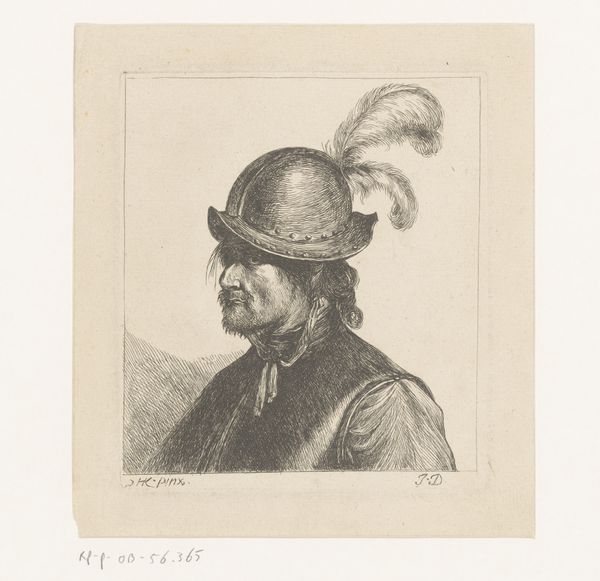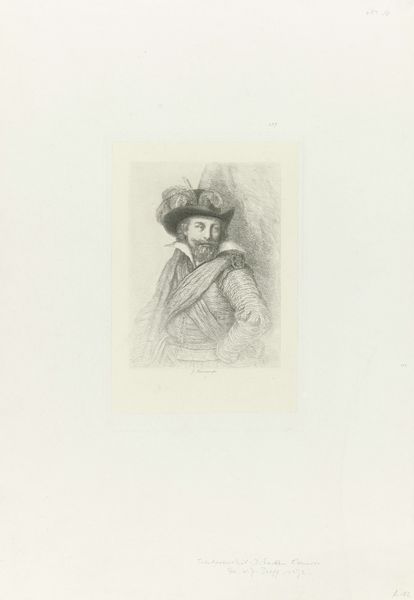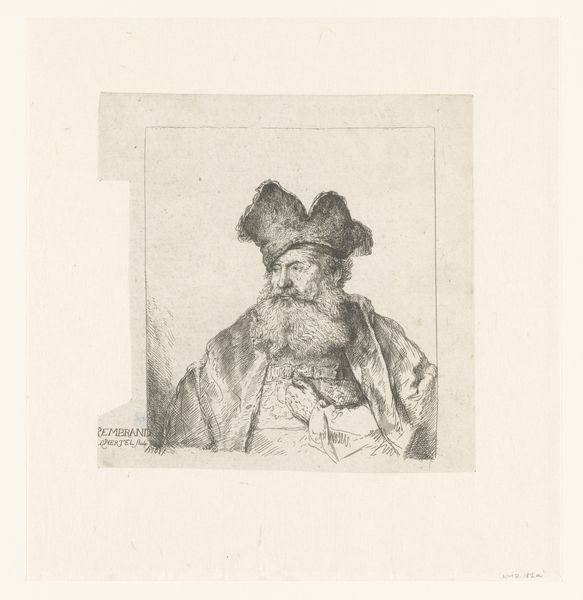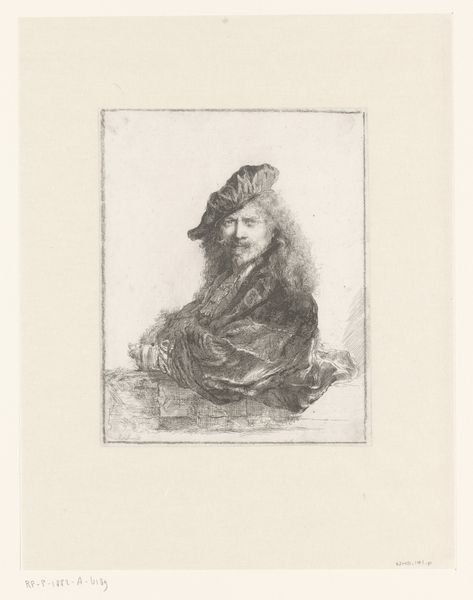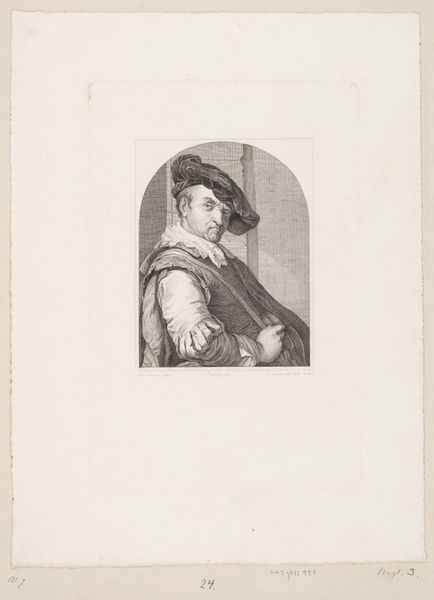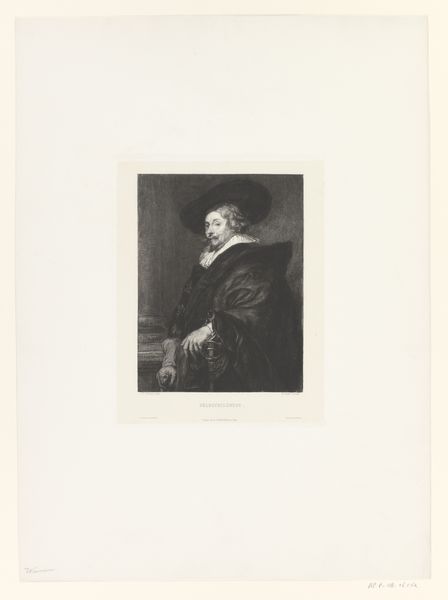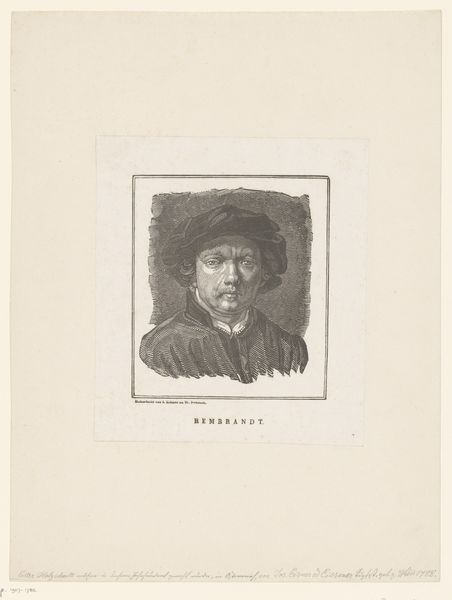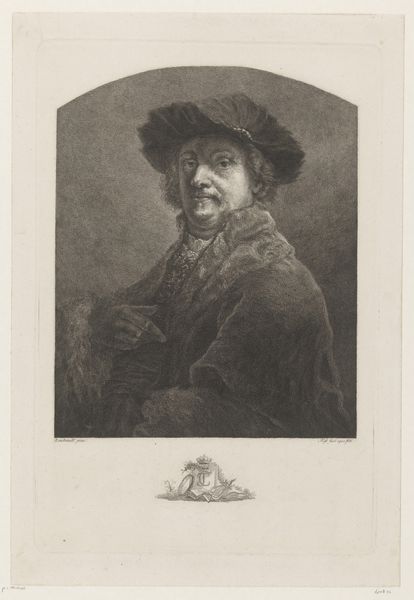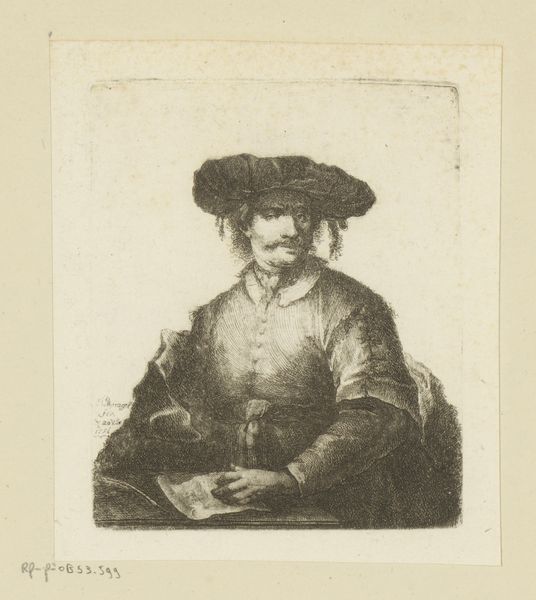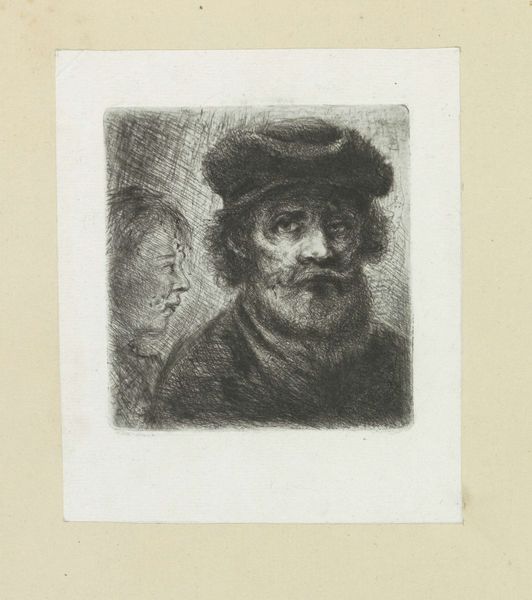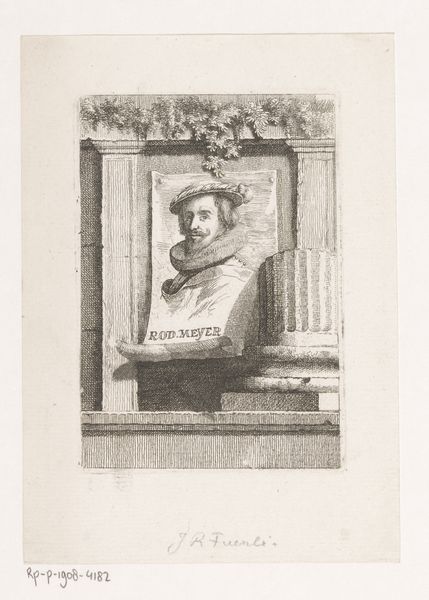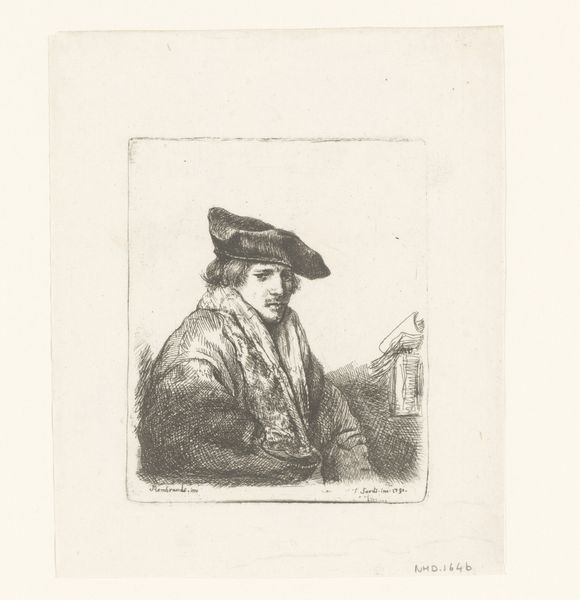
drawing, etching
#
portrait
#
drawing
#
etching
#
pencil drawing
Dimensions: height 81 mm, width 70 mm
Copyright: Rijks Museum: Open Domain
Editor: This is David Deuchar's "Self-portrait in a flat cap and embroidered dress," made sometime between 1753 and 1808. It’s an etching. I’m struck by the detail for such a small work; you can really see the texture of the fabric. What stands out to you? Curator: It’s a fascinating piece, isn't it? As a historian, what immediately grabs my attention is the context of self-representation. By the late 18th century, the self-portrait wasn't merely about likeness. Consider the democratization of art through printmaking—etchings allowed for wider dissemination of images. How does Deuchar choose to present himself here? Editor: Well, he's definitely styled. That embroidered dress and cap are quite deliberate choices. Is he signaling his profession or status? Curator: Precisely. It’s performative. He is presenting an identity that resonates with artistic and possibly intellectual circles. Consider the influence of academies and art societies at the time. The etching could be viewed as his way of participating in the visual discourse, a way to be “seen” in the art world. Does the backdrop tell you anything about that time? Editor: I suppose it’s intentionally nondescript, so all of the attention would go to the portrait of him. The lack of background tells me this is about the persona, not the place. Curator: An excellent point. This also highlights how portraiture was evolving. It's not just about capturing an individual, but constructing an artistic persona. He is saying, "This is how I want to be remembered." Editor: So it’s about his social role, expressed through this artwork. I see what you mean. I'll definitely look at portraits differently from now on! Curator: And hopefully, it shows how the image contributes to cultural currents of self-expression at that moment in history.
Comments
No comments
Be the first to comment and join the conversation on the ultimate creative platform.

